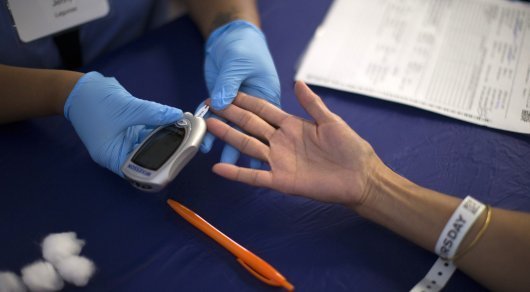ASTANA – Patients with diabetic foot syndrome may soon be able to have their condition cured and avoid amputation at the Asfendiyarov Kazakh National Medical University Centre of Diabetes in Almaty.
People with diabetes often have a number of complications in their lower limbs that lead to gangrene and doctors have to amputate an affected limb to save the person’s life.
According to preliminary estimations, doctors in Kazakhstan perform as many as 3,000 surgeries per year to amputate different parts of legs, reported Tengrinews. By utilising the university’s scientific potential, however, doctors hope to develop new treatment methods and conduct complex surgeries that will allow saving a leg and avoiding amputation.
“We offer to conduct an auto venous shunting of injured vessels of a lower limb with the patient’s own veins. This method came from Japan, from Prof. Tadahiro Sasajima, the leading vascular surgeon of the world. We transferred this technology to Kazakhstan. We want to implement the principle of public service centres, meaning diabetic patients will be referred to the centre for diabetes with any problems and apart from the disease itself, we will resolve complications that go with it. In the case of diabetic foot syndrome, we offer surgical treatment to restore blood flow and thereby save a lower limb,” the university’s clinic of internal diseases head Zhanai Akanov said in an interview with The Astana Times.
An endocrinologist (thyroid specialist) will work side by side with surgeons, constantly monitoring blood sugar levels and normalising them when necessary to help treat a complication and save a limb, he added.
Although this type of surgery has been available for a while, “the method lies in a more complete restoring of blood flow and exists within Kazakhstan’s highly specialised medical aid list,” he said.
The surgery will cost about 600,000 tenge (about US$1,805). Kazakh residents can use the services of the centre of diabetes within the guaranteed free medical care programme, stated Tengrinews.kz.
An operating room is almost ready and obtaining licenses for anesthesia and surgical activity are currently being arranged, said Akanov. Approximately 100 patients will receive the surgery each year.
Patients seeking the surgery will need to be referred to the university’s centre for diabetes. He believes a diabetic service needs to be established in Kazakhstan in the future.
“There are about 300,000 people who have diabetes in the country for now. Each of them has a potential risk of developing problems of diabetic gangrene. Therefore, the Kazakh Ministry of Healthcare and Social Development is considering creating a diabetic service,” he added.
Akanov noted complications leading to blindness and kidney problems might also occur in those suffering diabetes. Unique equipment that allows making a diagnosis and keeping a patient aware of his or her eye condition will be purchased.
“Early diagnosis is important. In such cases, correct treatment will allow avoiding surgical interventions,” he said.



